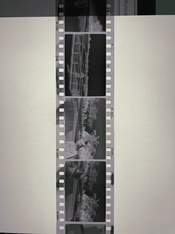Rumbo181
Subscriber
Hello
Anybody knows what is the likely causo of this spots in the negative?.
What I've learned so far:
It doesn't happen always. Most of my negatives are ok. but sometimes this problem come up.
Is not light leakage, because pattern is inconsistent and happens with negatives exposed with different cameras without light leakage - I've developed film for all of them and no problem.
Always located in the same side of the negative, but in different shape.
Sometimes they have the shape of a sprocket hole.
I only use Kentmere 100 and 400. Spots happen with both of them.
I use two kind of tanks: lab-box with continuous agitating -hence reel axe is horizontal- and an old tank Patterson style -reel axe is vertical.
Developer is Infosol 3, Ilford recommended times, 1+9 dilution.
Questions:
What do you think could be the cause?
Could it be something related with bromide drag?
Something related with temperature? I develop at 20C, but maybe the temp of the tank itself alter the temperature.
Many thanks in advance.
Best.
Ángel Luis
Anybody knows what is the likely causo of this spots in the negative?.
What I've learned so far:
It doesn't happen always. Most of my negatives are ok. but sometimes this problem come up.
Is not light leakage, because pattern is inconsistent and happens with negatives exposed with different cameras without light leakage - I've developed film for all of them and no problem.
Always located in the same side of the negative, but in different shape.
Sometimes they have the shape of a sprocket hole.
I only use Kentmere 100 and 400. Spots happen with both of them.
I use two kind of tanks: lab-box with continuous agitating -hence reel axe is horizontal- and an old tank Patterson style -reel axe is vertical.
Developer is Infosol 3, Ilford recommended times, 1+9 dilution.
Questions:
What do you think could be the cause?
Could it be something related with bromide drag?
Something related with temperature? I develop at 20C, but maybe the temp of the tank itself alter the temperature.
Many thanks in advance.
Best.
Ángel Luis







